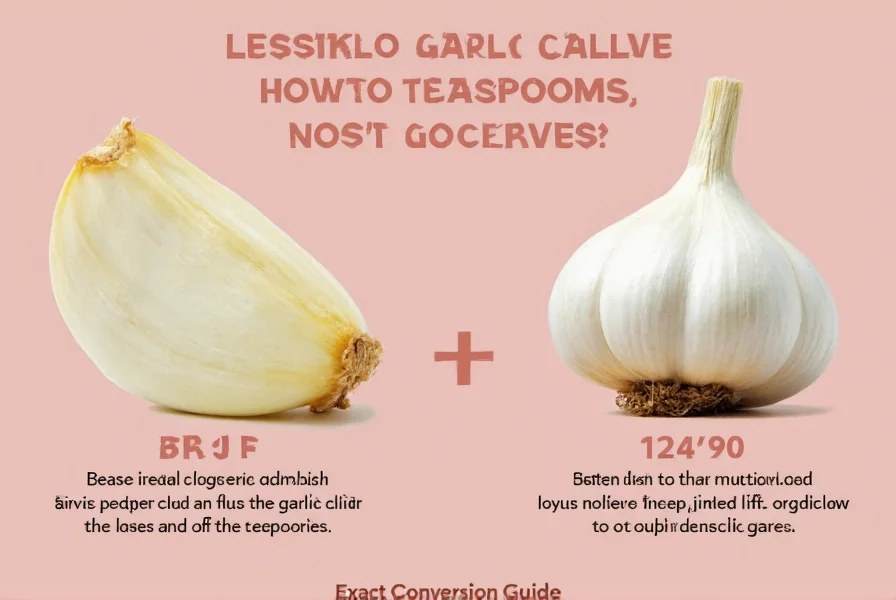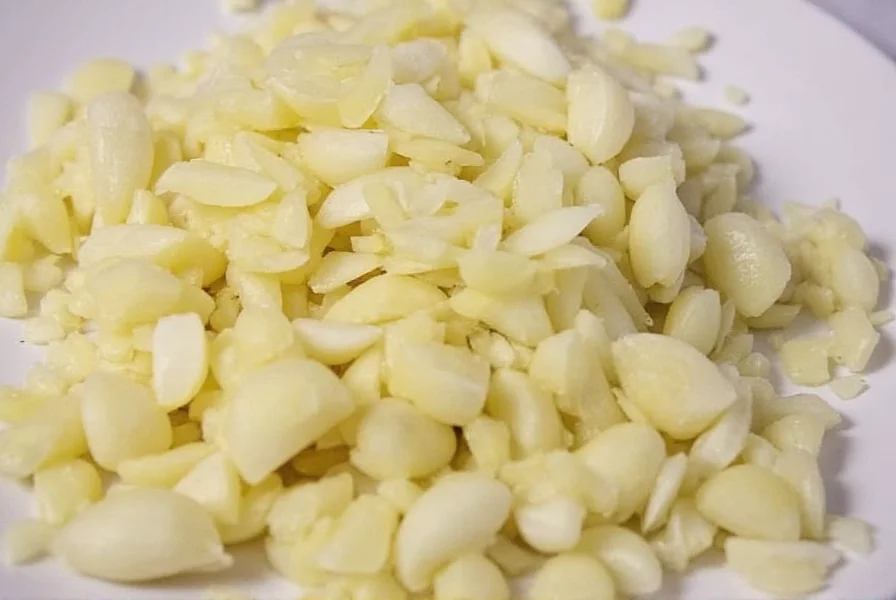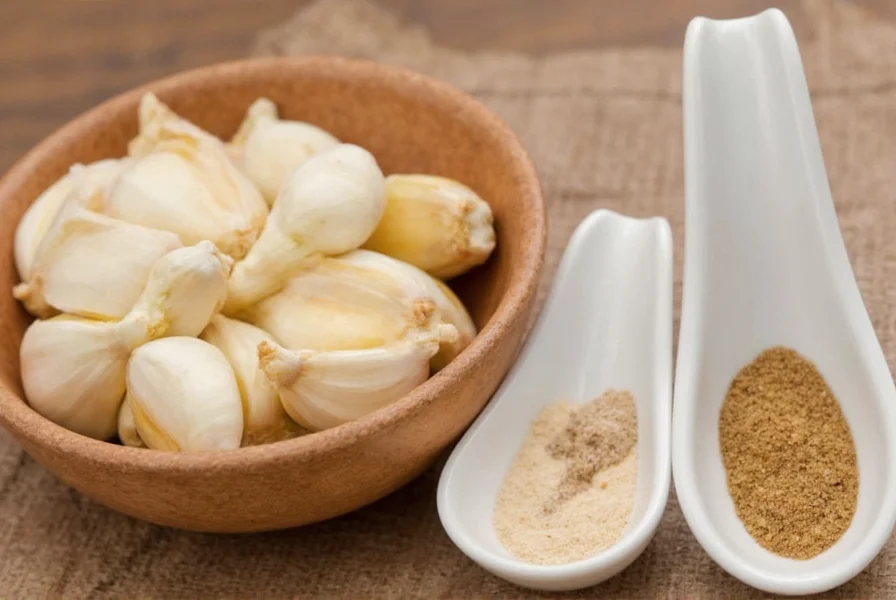Understanding garlic measurements is essential for achieving perfect flavor balance in your cooking. Many recipes call for specific quantities of garlic, but few specify whether they're referring to whole cloves or measured amounts. This guide provides precise conversions and practical tips to help you measure garlic accurately every time.
Factors Affecting Garlic Measurements
The exact teaspoon equivalent of a garlic clove depends on several variables that home cooks should consider:
Clove Size Variations
Garlic cloves come in different sizes depending on the variety and growing conditions. A single head of garlic typically contains both large and small cloves:
- Small cloves (from the outer layers): Approximately 1/4 teaspoon minced
- Medium cloves (most common): Approximately 1/2 teaspoon minced
- Large cloves (often from elephant garlic): Up to 1 teaspoon minced
Preparation Method Matters
How you prepare your garlic significantly impacts the final measurement:
- Minced garlic: Produces the most compact measurement (1 medium clove = 1/2 tsp)
- Chopped garlic: Takes up more volume (1 medium clove = 3/4 tsp)
- Pressed garlic: Yields slightly less volume than minced (1 medium clove = 7/16 tsp)
- Roasted garlic: Becomes softer and less dense (1 medium clove = 5/8 tsp)
| Garlic Form | 1 Small Clove | 1 Medium Clove | 1 Large Clove |
|---|---|---|---|
| Minced | 1/4 tsp | 1/2 tsp | 1 tsp |
| Chopped | 3/8 tsp | 3/4 tsp | 1 1/4 tsp |
| Pressed | 3/16 tsp | 7/16 tsp | 15/16 tsp |
| Roasted | 5/16 tsp | 5/8 tsp | 1 1/8 tsp |
Practical Measurement Tips for Home Cooks
When converting garlic cloves to teaspoons in your recipes, follow these professional kitchen techniques:
Accurate Measuring Method
For the most precise measurement, follow these steps:
- Peel the garlic clove completely
- Remove any green sprout in the center (if present)
- Finely mince the garlic using a sharp knife
- Gently pack the minced garlic into your measuring spoon
- Level off excess with the back of a knife
Substitution Guidelines
If your recipe calls for a specific garlic measurement but you only have whole cloves (or vice versa), these substitutions work well:
- 1 teaspoon minced garlic = 2 medium cloves
- 1 tablespoon minced garlic = 6 medium cloves
- 1 teaspoon garlic powder = 8 cloves of fresh garlic
- 1 teaspoon garlic paste = 4-5 medium cloves

Common Measurement Mistakes to Avoid
Many home cooks make these errors when measuring garlic:
Not Accounting for Density Differences
Chopped garlic takes up more space than minced, leading to under-seasoning if you use the same volume. Always specify your preparation method when following recipes that call for teaspoon measurements of garlic.
Ignoring Clove Size Variations
Using "one clove" without considering size can dramatically affect your dish's flavor. When precision matters (like in delicate sauces), measure your garlic rather than counting cloves.
Overpacking Measuring Spoons
While you should gently pack minced garlic, pressing too hard creates a dense mound that contains more garlic than intended. For consistent results, lightly tamp the garlic and level it off.

When Precision Really Matters
Certain dishes require exact garlic measurements to achieve the proper flavor balance:
- Vinaigrettes and delicate dressings: Too much garlic can overpower other flavors
- Garlic-infused oils: Precise measurements prevent bitterness
- Pasta sauces with subtle flavors: Like aglio e olio where garlic is the star
- Marinades for lean proteins: Excess garlic can make meat taste bitter
For these applications, measuring your garlic rather than counting cloves ensures consistent results every time. Professional chefs often weigh garlic for critical recipes—1 medium clove weighs approximately 3 grams when peeled.
Frequently Asked Questions
How many teaspoons is one large garlic clove when minced?
A large garlic clove, typically from varieties like elephant garlic, yields approximately 1 teaspoon of minced garlic. These oversized cloves can sometimes produce up to 1 1/4 teaspoons depending on their exact size and how finely they're minced.
Can I substitute jarred minced garlic for fresh cloves using teaspoon measurements?
Yes, but with caution. Jarred minced garlic often contains preservatives and has a stronger flavor. As a general rule, use 1/2 teaspoon of jarred minced garlic for every 1 teaspoon of fresh minced garlic called for in a recipe. Always taste as you go when making this substitution.
How do I convert garlic powder to fresh garlic cloves?
The standard conversion is 1/8 teaspoon of garlic powder equals one medium fresh garlic clove. Therefore, 1 teaspoon of garlic powder substitutes for approximately 8 medium cloves of fresh garlic. Remember that garlic powder has a more concentrated flavor, so start with less and adjust to taste.
Why does my recipe taste too garlicky even when I followed the teaspoon measurement?
This often happens because of how the garlic was prepared. Chopped garlic measured in teaspoons contains less actual garlic than finely minced garlic due to air spaces between larger pieces. Additionally, older garlic or certain varieties naturally have stronger flavors. For consistent results, always specify your preparation method and consider the garlic's age and variety.
How many garlic cloves equal one head of garlic?
A standard head of garlic typically contains 10-12 cloves, though this varies by variety. Elephant garlic heads may have as few as 4-5 large cloves, while some smaller varieties can contain up to 20 tiny cloves. When recipes call for "one head of garlic," they usually mean the entire bulb, not a single clove.











 浙公网安备
33010002000092号
浙公网安备
33010002000092号 浙B2-20120091-4
浙B2-20120091-4